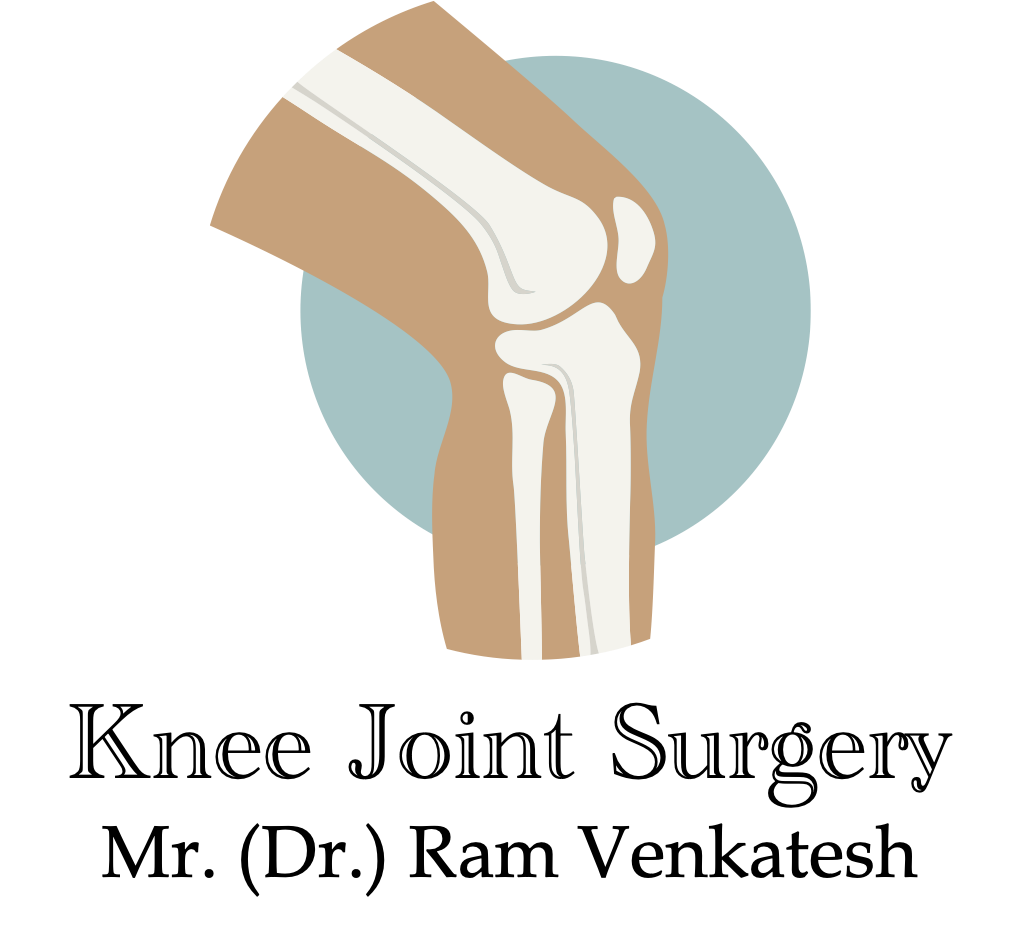Patient Information
Osteotomies Around The Knee
There has been a revival in the indications and surgical techniques for osteotomies around the knee. The aim of an osteotomy is to redistribute pressure across the joint either to treat articular cartilage damage or early osteoarthritis and thereby reduce pain and delay eventual joint replacement. In certain scenarios of ligament instability a secondary improvement in stability could be achieved by altering tibial slope. Newer methods of fixation has improved the rehabilitation programmes and hence outcomes following osteotomies.
Coventry used full length weight-bearing radiographs on a series of 120 normal subjects of different gender and age and showed that thetibiofemoral mechanical angle was 1.2 degrees varus. The distal femoral anatomic valgus (measured from the lower one-half of the femur) was 4.2 degrees in reference to its mechanical axis. This angle became 4.9 degrees when the full-length femoral anatomic axis was used. When simulating a one-legged weight-bearing stance by shifting the upper-body gravity closer to the knee joint, 75% of the knee joint load passed through the medial tibial plateau.
Patient Information
What is an Osteotomy?
Osteotomy is cutting of a bone. The forces across the knee joint can be rebalanced by cutting and reshaping either the top end of the leg bone (Tibia) or the lower end of the thigh bone (femur). The decision on which bone is dealt with depends on the centre and type of the deformity. The rehabilitation after an Osteotomy is slightly longer than say after a knee replacement.
Why an osteotomy instead of a knee replacement?
The benefit of an osteotomy though is to delay the need for a knee replacement. Osteotomies are typically offered to young active patients with good range of knee movements but early osteoarthritis of the inner side of the knee.
Information relating to surgical admission and hospital stay
There is a lot of surgical planning done before an osteotomy. Admission is on the day of surgery and the surgery lasts about 1-2 hours. Infection screening and antiseptic washes are necessary prior to surgery. Antibiotics are given just prior to surgery. The bone is precisely cut with assistance usingxrays in operating theatres. The cut bone is fixed with special plates to facilitate early movements and rehabilitation though weight bearing may have to be restricted for the initial 6 weeks. Pain relief following surgery is achieved with the use of local anaesthesia around nerves in the leg. The knee is supported in a brace allowing range of motion and a bulky bandage is usually retained for 24-48 hours. You are likely to go home in 1-2 days mobilising with the aid of crutches. You are likely to be given precautionary injections to thin your blood to prevent thrombosis.
Risks
Infection, stiffness, wound problems, swelling, thrombosis, numbness around scars, nerve or blood vessel injury, delayed healing and potential need for hardware in future, tibial plateau fracture, under or over correction.Please contact the hospital ward if there are any post-operative concerns.
Types of Osteotomies
- High Tibial Osteotomy (HTO)
- Distal Femoral Osteotomy (DFO)
- Tibial Tuberosity osteotomies (TTO)
- Combined multiplanar osteotomies
Planning an Osteotomy
- Physical examination- Look for coronal and rotational mal-alignment. Also examine for ligament instability and varus thrust in gait.
- Radiological assessment- Weight Bearing Mechanical axis, location of centre of deformity, CT scans for multiplanar deformity, MRI scans to assess the meniscus and articular cartilage
- Pre-operative templating and planning correction angles in different planes and planning fixation
High Tibial Osteotomy
Varusmalalignment with medial compartment articular cartilage damage is the commonest indication for HTO. The two common techniques are medial opening wedge and lateral closing wedge osteotomy. The opening wedge osteotomy has gained in popularity due to less invasive techniques and the ability to avoid change in shape of the proximal tibia for future TKR. Fibular osteotomy is not required and the common peroneal nerve is avoided. The second indication for HTO is for a ligament deficient knee with varus thrust.
Coventry MB. Osteotomy of the upper portion of the tibia for degenerative arthritis of the knee.A preliminary report. J Bone Joint Surg (Am) 1965;47:984-90
Rand JA, Neyret P. ISAKOS meeting on the management of osteoarthritis of the knee prior to total knee replacement.In ISAKOS Congress, 2005.
Paley D.The Principles of Deformity Correction. 2003, New York: Springer-Verlag
Opening- or closing-wedged high tibial osteotomy: a meta-analysis of clinical and radiological outcomes2011 Dec;18(6):361-8. doi: 10.1016/j.knee.2010. Smith TO, Sexton D, Mitchell P, Hing CB
Debate remains over the superiority of performing a medial opening-wedge or lateral closing-wedge HTO. The purpose of this study was to compare the clinical and radiological outcomes, and complications of patients following opening-wedge compared to closing-wedge HTO. A systematic review was undertaken of published and unpublished literature databases from their inception to May 2010. Twelve papers reporting nine clinical trials were found to be suitable for meta-analysis comparing 324 opening-wedge HTOs to 318 closing-wedge HTOs. There was no difference in the incidence of infection, deep vein thrombosis, peroneal nerve palsy, non-union or revision to knee arthroplasty (p>0.05). There was however a significantly greater posterior tibial slope and mean angle of correction, reduced patellar height and hip-knee-ankle angle following opening-wedge HTO (p<0.05). No significant difference was found for any clinical outcome including pain, functional score or complications (p>0.05).
HTO vsUni compartmental knee
Total Knee arthroplasty after HTO
